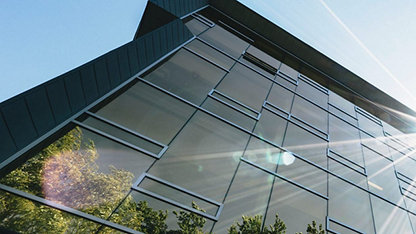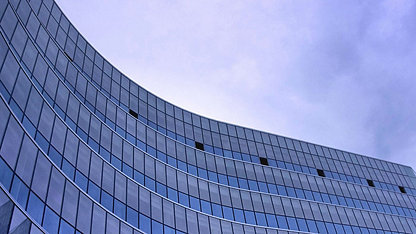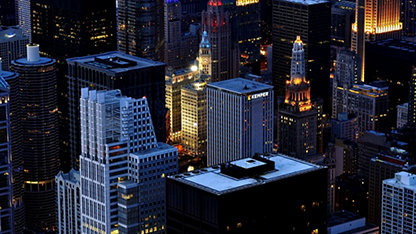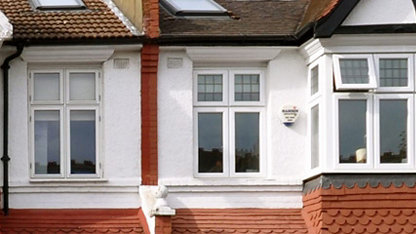Superfast internet has put a fire under the economy of the city of Chattanooga, Tennessee. Could it do the same for others?
For quite a long time, there was nothing much going on in Chattanooga, Tennessee. As industry and jobs disappeared in the late 1970s, it slipped into the same decline that beset many of America’s mid-sized cities. But in 2010, the city took its future into its own hands with the launch of “the Gig”. As the New York Times reported it: “In the global race to see who can offer the fastest internet service, an unlikely challenger has emerged: Chattanooga.”
In the eight years since, Chattanooga, or “Gig City” as it is now sometimes called, has rolled out a 9,000 mile (14,500km), fully fibre-optic network, making internet speeds of 1Gbps (or 1,000 megabits per second) accessible to everyone within 600 square miles (1,560 km2) for $70 a month. To put that in perspective: a two-hour HD movie that normally takes 25 minutes to download over an average broadband connection, takes just 33 seconds in Chattanooga. That is 50 times faster than the average US broadband speed and among the fastest anywhere in the world.
“A two-hour HD movie that normally takes 25 minutes to download over an average broadband connection, takes just 33 seconds in Chattanooga. That is among the fastest anywhere in the world.”
The city’s municipally owned utility company, EPB, which is behind the project, says that by the end of 2016, 87,000 homes and businesses were subscribed to its fibre-optics service. The impact on the community, which includes 350,000 people in the wider metro area, has grabbed headlines: 2,800 to 5,200 jobs created, and economic and social benefits of $865m rising to $1.3bn in the years between 2011 and 2015. Investable capital from venture capital funds totalled $50m by 2014. Not exactly Silicon Valley, but then in 2009 they were close to zero. At the end of 2015, Chattanooga raised the bar again, offering a 10Gbps service – unheard of on a city-wide scale.
Chattanooga might be the most well-known of the “gig cities”, but it is not the only one. Two others in the US – Bristol in Virginia and Lafayette in Louisiana – have also rolled out community-wide, ultra-fast internet services. Like Chattanooga, these are owned by municipal power utility companies and, according to a 2012 report by the Institute for Local Self Reliance (ILSR), are the result of frustration at “ever-increasing prices for telecommunication services and the reluctance of the incumbent providers to upgrade their networks to 21st-century needs”.
Each scheme has faced challenges from private service providers, and each has had a different agenda: in Chattanooga, the focus was on increasing connective capacity, whereas in Bristol, it was to achieve price stability. In all cases, uptake from launch has exceeded expectations.
But these examples are still the exception to the rule. Nationwide projects like the UK government’s Superconnected Cities programme, which provides broadband grants of up to £3,000 to small businesses, still rely on an internet service provider deeming there to be enough demand to lay fibre in your area of the city.
“One of the best connected buildings in Europe occupies one corner of Queen Elizabeth Olympic Park in east London. Here East has access to internet speeds of 10Gbps and a duct network – of which there are three separate and resilient routes.”
London’s Old Street roundabout, for example, now known as Silicon Roundabout, was initially criticised by tech start-ups for its poor connectivity because there was insufficient fibre infrastructure to support the volume of companies locating there. It took the likes of Vodafone to move into the area to create a business case for it.
“On a national scale we really have to work to roll out strong fibre networks, which will enable regional businesses to compete,” says Tom Redmayne MRICS, director of business development UK at connectivity certification service Wiredscore. “Businesses are going to get priced out of cities like London, and having a really viable option that provides not only the investment but the digital infrastructure to run your business is going to be hugely attractive.” In the absence of city-wide fibre rollout, there is plenty that can be done to improve internet connectivity at the real estate level. US-based Wiredscore came to the UK after winning a Greater London Authority tender to create a digital connectivity rating system. The GLA saw it as a way to improve the general connectivity of London building by building, says Redmayne.
To date, Wiredscore has certified more than 350m ft2 (32.5m m2) globally, and 30m ft2 (2.8m m2) in the UK. Redmayne says: “Landlords are becoming more aware of the need to ensure their buildings don’t become obsolete. They want to demonstrate that they are operator-led. Tenants are asking these questions and I think there’s been an acknowledgement that there’s been a lack of transparency in the market previously.”
And being “well connected” is about more than the speed of your internet. A Wiredscore rating focuses on three things: connectivity, infrastructure and readiness. “That’s looking at: what is your cost-per-speed, how likely is your internet to go down, and how quickly can you get in and get set up,” explains Redmayne. If the building passes, its score translates to one of four levels of certification, which lasts for two years.
Assessment information, which includes everything that is wrong with a building and how to improve it, is provided for clients in private. Redmayne says this is to make sure landlords are happy to put forward all their buildings for rating. Having only your newest, most advanced buildings certified platinum is not enough to improve overall connectivity of a city.
What does “platinum certification” look like? One of the best connected buildings in Europe occupies one corner of Queen Elizabeth Olympic Park in east London. Here East has access to internet speeds of 10Gbps and a duct network – of which there are three separate and resilient routes – connected to multiple carrier networks at all perimeters of the park.
“The access to many providers and many products presents choice and competition,” explains Richard Palmer MRICS, project director at Delancey, Here East’s asset manager.
“Given the existing provision there, tenants will be unlikely to face an excessive connection charge – as the dig to access the site has already been completed – and the lead time will be much shorter when compared against other buildings. We would expect an internet connection to be provided in less than five days, for example.”
Quick connection times can be a big plus. Wayleave agreements in the UK can often delay a tenant being able to move into a rental property for months, leaving all parties frustrated: landlords incur void costs, while tenants have to work off 4G dongles.
Palmer expects the IT function in all businesses to become a key factor in property investors’ future acquisition plans. “Physical location will be challenged by virtual location, and what the technology infrastructure provided by the building enables the organisation to do,” he says.
Some landlords understand how the world is going to change and how they should design-in their technology and connectivity. For others, it is the beginning of an education process.
As an example, 5G for mobile – when it arrives – runs on a higher frequency than 4G, and that does not travel well through glass. Redmayne says: “Buildings will need to have the right infrastructure to cope with those kinds of demands on phone signal.”
Whether you are a city mayor or the landlord of a property, the commercial imperative for faster, more resilient digital connectivity is only going to get stronger. There are opportunities for those able to think far enough ahead.















